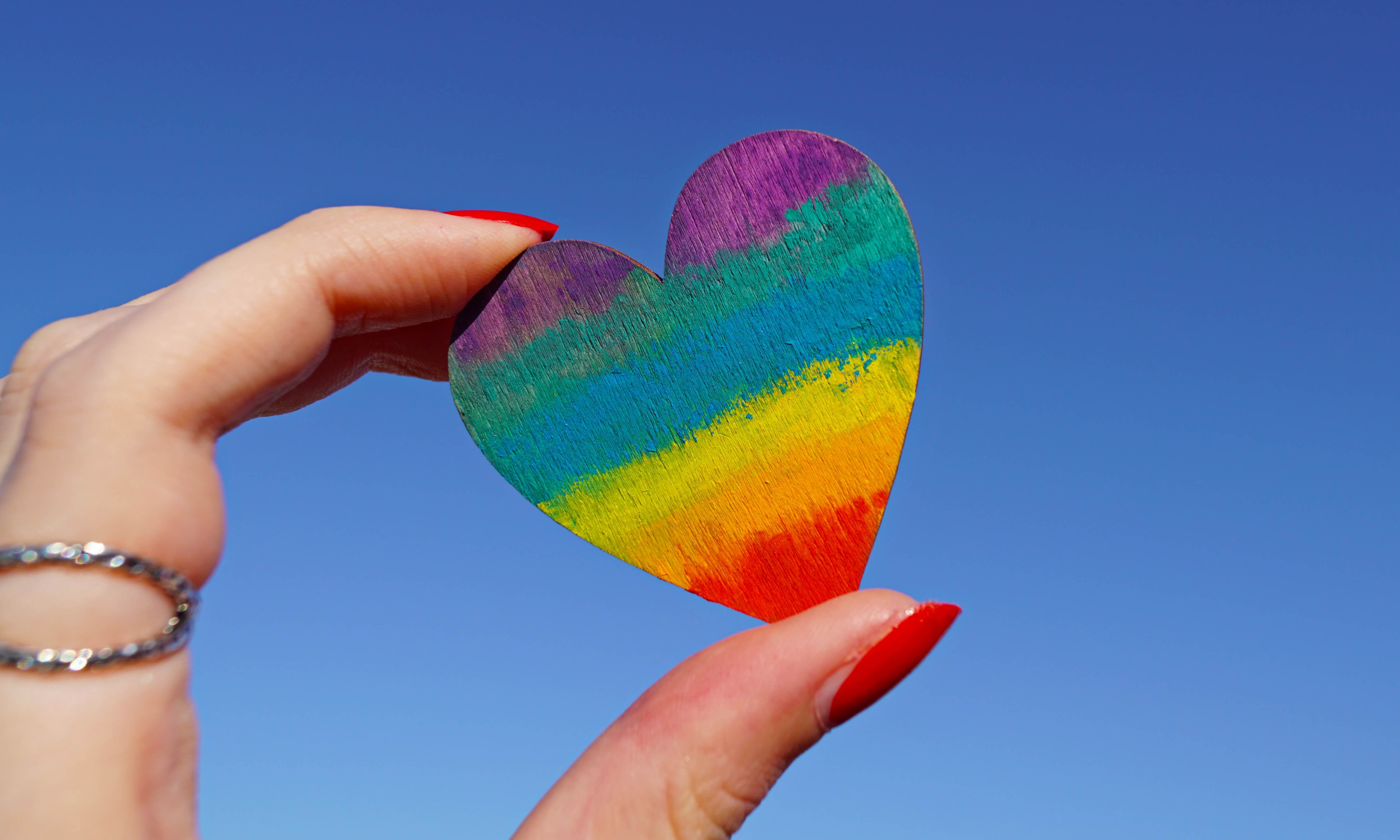

 Welcome to...
Welcome to...We believe you are trying to shop from the following location: Rest of the world
To enjoy low cost shipping and local currencies please allow us to redirect you to our local store.
Choose 3 for £45 or 5 for £75
Choose 2 from £130 or 3 from £180
Choose 2 for £20

LGBT History Month is a month-long annual observance of Lesbian, Gay, Bisexual and Transgender history as well as the history of the Gay Rights and related Civil Rights movements. Founded in 1994 by Rodney Wilson, a Missouri high-school history teacher LGBT History Month discusses role models, builds the community and much more. In many countries such as Hungary, the UK, Brazil and Greenland LGBT History Month is celebrated in February. In countries such as the US, Canada and Australia it is celebrated in October to coincide with National Coming Out Day on 11th October as well as to commemorate the first and second marches on Washington in 1979 and 1987. In Berlin it is known as Queer History Month and is celebrated in June.
For people who are not LGBTQ+, learning queer history is one of the best ways to support the LGBTQ+ community and understand the experiences of LGBTQ+ people in the present day.
Schools OUT UK is the LGBT+ Education Charity and is the founding organiser of LGBT+ History Month in the UK. The committee has around 10-15 members, a majority of these members are current or former teachers.
It is important to remember the events that have taken place in history to bring us to this point for LGBT+ rights. History of Lesbian, Gay, Bisexual and Trans communities often isn’t included in school curriculum.
To learn more here are some significant events from LGBT history:
Cowell was a racing driver and World War II fighter pilot. She was born in Croydon and studied engineering at University College London (UCL). She underwent a secret procedure in order to get a certificate stating that she was intersex. This enabled her to undergo surgery and get a new birth certificate. In later life, she claimed that being intersex was what ‘justified’ her transition and focused specifically on chromosomes and genetics, an approach which was very much 'of its time' compared to the modern-day discourse around trans and gender identities.

(Photo credit © British Book Centre, Inc.)
This trans-support group aimed to provide better information and awareness about transgender people and act as a self-help and social organisation for them.
Homosexual acts we legalized on the condition that they were consensual, in private and between two men above the age of 21. The act applied only to England and Wales however was later extended to Scotland by the Criminal Justice Act (Scotland) 1980 and Northern Ireland by the Homosexual Offences Order (Northern Ireland) 1982. However, this didn’t extend to the Navy, the Armed Forces, Scotland, Northern Ireland, Channel Islands, or the Isle of Man, where sex between two men remained illegal.
A series of spontaneous, violent demonstrations occurred. Members of the LGBT community fought against a police raid on the Stonewall Inn in Manhattan. As Jamilah King writes: The bar's patrons clashed with police officers, in a raid that would have otherwise resulted in arrests and public shaming. However, this time the patrons fought back, setting off what we now know as the modern LGBT movement, including the tradition of LGBT Pride marches. Two often-forgotten people who made an impact that night were transgender women of colour: Marsha P. Johnson and Sylvia Rivera. The event triggered the modern LGBT liberation movement in the US and beyond.
In 1970, pride and protest marches were held in Chicago, Los Angeles, New York City, and San Francisco around the first anniversary of Stonewall. In 1972 the first march was held in London and attracted a crowd of around 2000 people. The events became annual and grew internationally. In 2019, New York and the world celebrated the largest international Pride celebration in history. Today, Pride in London attracts up to a million people, with other Pride events happening throughout the year and across the UK.
 Photo by Anna Shvets from Pexels
Photo by Anna Shvets from Pexels
His partner Rupert Whittaker, Martyn Butler and friends set up the Terrence Higgins Trust, the UK’s first AIDS charity. A year later, the government banned men who have sex with men from donating blood due to the AIDS crisis. A lifetime ban was enacted due to fears amid the HIV/AIDS crisis of the ‘80s. The ban was not lifted until 2011.
This was a major step backwards for the promotion of LGBTQ+ rights and awareness, triggering a huge uproar and renewed momentum in LGBTQ+ activism. The Section stated that local authorities “shall not intentionally promote homosexuality or publish material with the intention of promoting homosexuality” or “promote the teaching in any maintained school of the acceptability of homosexuality as a pretended family relationship”. This meant teachers couldn’t speak about same-sex relationships with their students. This included students coming out to their teachers or tackling homophobic bullying. This prompted Sir Ian McKellen to come out as gay on BBC Radio. He formed Stonewall with Michael Cashman CBE, Lisa Power MBE and others to lobby against Section 28 and other barriers to equality.

Photo by Anna Shvets from Pexels
The specialised agency of the United Nations, established on 7 April 1948 and headquartered in Geneva, Switzerland, declassified same-sex attraction as a mental illness.This was a huge step forward, as LGBTQ+ people had previously received controversial and often detrimental treatments to try and ‘cure’ their sexuality.
Their aim was and still is to offer support and guidance to trans and gender-diverse children, young people, and their families. They also work to educate and spread awareness in society. Shay and Blue proudly support Mermaids and all profits from sales of our fragrance Mermaid Kisses is donated to the charity.
The attack killed three and wounded at least 70. Following the attack, a large open air meeting took place in Soho Square and thousands attended. The Metropolitan Police Assistant Commissioner delivered a speech at the event, marking a turning point in the relationship between the LGBT community and the Metropolitan Police.
In 2001, the ban on lesbian, gay, and bisexual people serving in the army was lifted by UK Government. In 2002, same sex couples in the UK received equal rights for adoption as straight couples. Section 28 was repealed in 2003 in England, Wales, and Northern Ireland. In 2004, the Gender Recognition Act passed, which allows transgender people to fully and legally identify with their chosen gender, as well as acquire a new birth certificate.
However, a 1-year ban was put in place instead, meaning they could not donate blood if they had been sexually active in the last 12 months.
Finally making same-sex marriage legal. Scotland followed suit later in the same year.
 Photo by Wallace Araujo from Pexels
Photo by Wallace Araujo from Pexels
As you can see, there have been so many important events in the timeline of LGBT history that were turning points for greater equality and freedom. Same-sex relationships are finally legally permitted and their rights as couples to marriage and adoption are finally equal to their straight counterparts. Health organisations no longer stigmatise homosexuality or transgender issues with dated definitions, and Pride events across the country give LGBTQ+ people a place to feel included, heard, and valued.
Discrimination is still very much prevalent in society, so awareness groups and political movements continue to be a voice for those who struggle. You don’t have to be part of an LGBT movement to fight oppression, though. Your awareness of what LGBTQ+ people have gone through and continue to experience and being supportive of LGBTQ+ rights is one of the most effective ways to help make LGBT oppression history.
Like this article? Sign up to our newsletter to get more delivered straight to your inbox
_____________
References:
https://www.youngstonewall.org.uk/node/43992
https://www.highspeedtraining.co.uk/hub/history-of-lgbtq-timeline/
Cover photo by Marta Branco from Pexels
The Sunday Scroll: Things That Made Life Feel Better
Episode 8: Beyond the Continent
Episode 7: How to Wear a Fantasy
Customer service
Talk to us via chat. 9-5pm EST. Wed - Sun
Fast Free Shipping
Get free shipping on orders of £60 or more
New Customers
New customers enjoy 10% off their first order
Secure payment
Your payment information is processed securely


Share:
What Does Ylang-Ylang Smell Like?